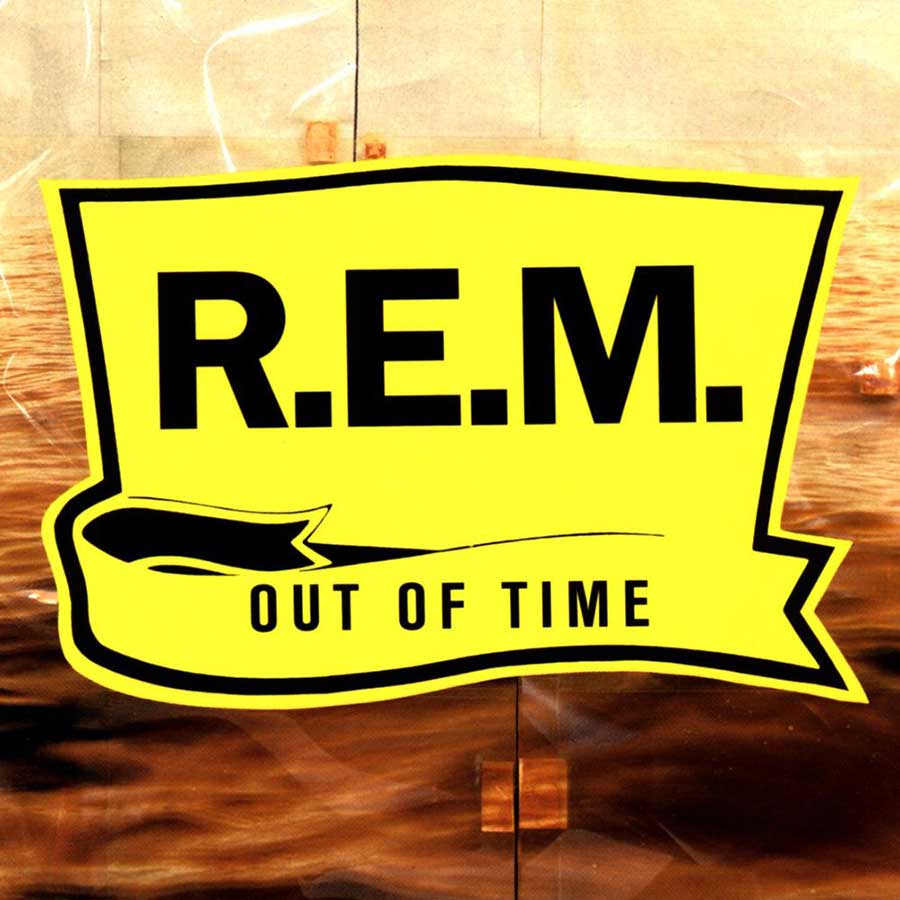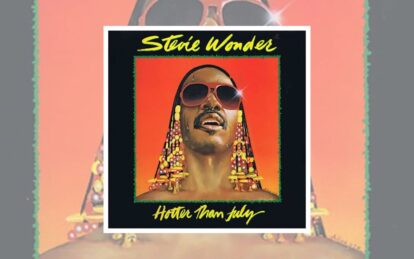
R.E.M. Out Of Time cover
We celebrate the album that transformed R.E.M. from arguably the world’s biggest cult band into bona fide crossover superstars, Out Of Time… By Rob Jovanovic
In 1991, the chart landscape was changing. Many bands were starting to feel the growing influence of Seattle’s grunge scene but as most guitar music grew louder, R.E.M., not for the first time, were heading in the opposite direction.
Despite forming in the southern college town of Athens, Georgia, in 1980, R.E.M. could never be characterised as a typical “southern” band. They took their musical cues from punk and post-punk, mixing it with a love of The Velvet Underground and with their own enigmatic singer.
Touring extensively between 1981 and 1987, their first five albums on IRS – the label founded by The Police’s manager Miles Copeland – saw them grow in critical acclaim.
When their contract with IRS expired, they moved to Warner Bros, making their major label debut with Green, a critical and commercial hit that was followed by a comprehensive 11-month world tour and captured in all its unusual glory on concert movie, Tourfilm.
After playing their debut gig in a disused church in April 1980 they’d spent most of their first decade on the road. Yet the Green tour had left them with the dilemma of what to do next.
Michael Stipe, perhaps more than his fellow bandmates, had fully stepped into the role of ‘arena-band rock star’ as he told David Fricke: “After a year-long tour it’s about a six-month period for me to really be able to sit down at a table with people and just be a regular guy.”
This decompression period was now stretching out longer than normal into 1990 and none of the band were sure they wanted to go through another year in a similar vein.
Instead they decided to record a collection of less stadium-friendly songs, stay off the road, and only present themselves to fans through music videos. Bizarrely, this led to their fanbase growing exponentially.
Like R.E.M.’s previous albums, Out Of Time began with two or three band members convening at their Athens rehearsal space to work on various fledgling ideas.
Usually this would be bassist Mike Mills and guitarist Peter Buck, with an occasional appearance from drummer Bill Berry. But unlike previous occasions, this time they had few remnants left over from writing on the road.
A fresh approach was needed. The new unwritten rule was that all instrumentalists had to change their traditional roles.
Mike Mills took a seat at the piano and various keyboards, Bill Berry played bass and percussion while Peter Buck handled duties on mandolin, banjo and acoustic guitar. Electric instruments were locked away.
Michael Stipe was absent for many early sessions while he performed a low-key tour with Billy Bragg and Natalie Merchant in the far reaches of Europe. When he returned to Athens, he was handed a rough demo tape of almost 20 instrumentals to listen to in his car.
- Read more: Making Peter Gabriel’s So
- Read more: Making David Bowie’s Low
While driving around Athens, he’d come up with guide vocals for the basic melodies and write initial lyrics based on the tunes he’d been presented with.
Stipe, too, was changing things up – as he didn’t want to be labelled as a political writer, he challenged himself to pen love songs instead.
All four band members then booked into John Keane’s Athens studio to work on the initial demos.
The actual master tapes were then recorded during the autumn of 1990 at Bearsville Studios in Woodstock, New York, with producer Scott Litt, where they’d also worked together on Green two years earlier.
Much reworking and rewriting took place. Stipe’s lyrical additions showed the band that the new album was leaning towards a collection of love songs, but not the type you’d hear on the radio.
Around 18 songs were recorded and, after a short break, they reconvened at Prince’s Paisley Park complex in November to mix the final album, happy that the venue was “in the middle of nowhere”, according to Mike Mills, so that they could work without distractions.
It was here that they recorded extra vocal parts that made a massive difference to the final songs. Stipe’s view was that some of the material needed a female voice to back up the lead vocals and in some cases play as a counterpoint. He had an old friend in mind, Kate Pierson, of fellow Athens band The B-52’s.
Stipe had appeared in the video for Deadbeat Club from The B52’s album Cosmic Thing and, when he bumped into Pierson at a show in New York, he asked if she’d contribute to R.E.M.’s new LP.
“I passed Michael on the big stairway at Radio City and he [asked], I said sure and that was that,” recalled Pierson. “Michael sent me a tape later and said I could play around with it and figure out some parts. They were very loose about it”.
When the time came, Pierson flew into Minneapolis from California to be met by a snowstorm. “I have a picture of Michael and I in front of Paisley Park holding snow shovels,” she says.
“We were trying to meet Prince and every time we heard someone go by we all looked to see if it was him, but we never saw so much as his shadow!”
Pierson, who sang on three tracks, was only one of a flurry of guests who would appear on the final album.
Touring guitarist Peter Holsapple – sometimes called the fifth member of R.E.M. – played on six songs, supplying bass, acoustic guitar and even a rare electric guitar part on one track.
John Keane added pedal steel, Mark Bingham arranged string parts for seven songs and, to much surprise, the album even included a rap.
- Read more: The Stone Roses – the story of Spike Island
Elsewhere, Kidd Jordan added various saxophone parts and on one song you could even hear a flugelhorn. It was quite a departure for the band and no one was quite sure how it would be received.
Downbeat acoustic tracks such as Low and Half A World Away were scattered in amongst outright pop takes such as Radio Song and Shiny Happy People, while hidden away in the mix was the acoustic gem of Losing My Religion, which would become the band’s biggest-selling single; a bona fide 90s classic.
The final component they needed to agree on was an album title. R.E.M. seriously considered leaving it blank, but with IRS already having released a compilation called Eponymous, that might have got a little confusing.
Actual titles under consideration included Imitation Crab Meat, Borehole and Trolling For Olives, but after a desperate phone call from the Warners office explaining that the album would be delayed if they didn’t provide a title there and then, someone in the room said, “we’re out of time” and that was that.
While it seemed strange that no ‘real’ tour would follow the album’s release the band did embark on a promo trip that took in dozens of print and radio interviews, TV spots and a handful of low-key and sometimes beguiling live shows.
- Read more: Top 20 80s B-sides
- Read more: Top 20 80s cover versions
Stipe spent much of the year fielding questions about the switch to writing love songs. One of the band’s previous hits had been The One I Love in 1987, which, in fact, worked as a kind of anti-love song.
Reaction to the album was overwhelmingly positive and while in the UK, R.E.M. made a number of memorable performances. For two nights at London’s tiny Borderline club an act called Bingo Hand Job was booked in. Word soon spread that it was, in fact, R.E.M. and friends.
The band ran through several hours of rough cover versions, bad jokes, acoustic takes of their own songs old and new and ushered in guests such as Robyn Hitchcock and Billy Bragg.
Back in the United States they appeared on more mainstream shows such as Saturday Night Live, where
Out Of Time went to No.1 in Austria, the Netherlands, France, Italy, the UK and the US Billboard Top 200 among others.
It shifted 1.5 million copies in the UK and a further four million in the US contributing to 18 million albums sold worldwide. The mark of a truly global band.






